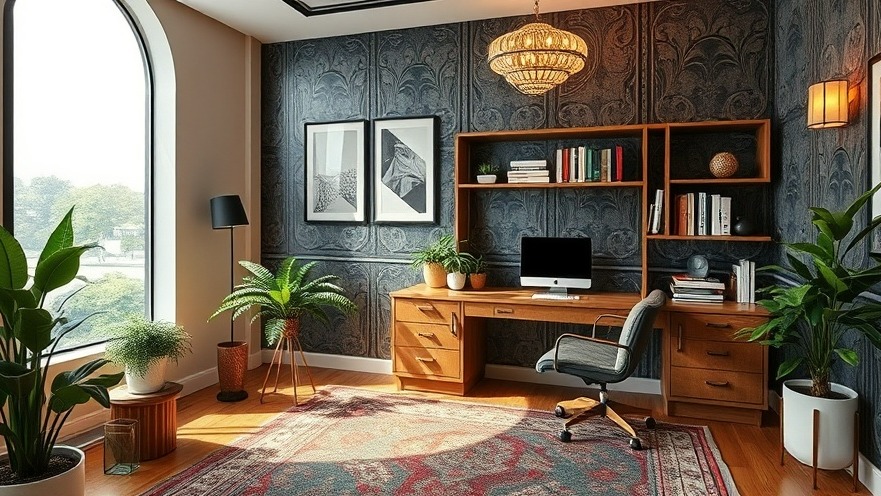
Understanding the Allure of Art Deco in Modern Workspaces
Art deco, a design style that flourished in the 1920s and 30s, is more than a mere aesthetic; it represents a fusion of exuberance and modernity. As digital nomads seek to create comfortable and efficient remote workspaces, incorporating elements from art deco can significantly enhance both functionality and style in their environments.
The Origins and Characteristics of Art Deco
Art deco emerged initially from the 1925 Exposition Internationale des Arts Décoratifs et Industriels Modernes held in Paris, showcasing advancements in design across multiple disciplines. Distinctive features of art deco include geometric patterns, rich materials, and a sense of streamlined elegance that mirrors the technological advancements of its time. These defining qualities make it a perfect addition to modern workspaces, where creativity and functionality coexist.
Bridging the Past and Present: Art Deco in the Digital Age
For digital nomads, blending art deco design into their workspace can communicate a sense of luxury and productivity. By integrating clean lines and geometric patterns, individuals can create an inspiring atmosphere. Items such as a geometric patterned rug or a sleek desk lamp made from chrome and glass can evoke the essence of the 1920s while serving practical purposes in today's tech-driven workspaces.
Bold Colors and Luxurious Materials: Ideas for Remote Workspaces
Art deco's characteristic bold color palette—rich blacks, deep blues, and vibrant reds—can invigorate a workspace. Utilizing these shades for accent walls or decorative items can enhance focus and inspire creativity. Additionally, incorporating luxurious materials like velvet or metallics not only adds to the aesthetic but also introduces texture that can make a workspace feel more inviting.
Art Deco Furniture: Essential Pieces for Comfort and Style
When designing a workspace, choosing the right furniture is critical. Look for art deco-inspired pieces such as lacquered desks, elegant seating with artful upholstery, or stylish bookshelves featuring clean lines and bold accents. These elements can help maintain an organized and visually appealing environment, essential for productivity.
DIY Art Deco Touches to Personalize Your Workspace
For those with a creative flair, introducing DIY art deco projects into a workspace can be both fun and fulfilling. Consider refurbishing an old desk or chair with a touch of lacquer or experimenting with geometric wallpaper designs. Adding personalized art deco touches can create a unique workspace that reflects both personal style and the grandeur of the historical movement.
Conclusion: Embracing Art Deco for Enhanced Productivity
Incorporating art deco elements into remote workspaces not only honors a rich design legacy but also creates a motivating and comfortable environment. As digital nomads strive to optimize their workspaces, the timeless allure of art deco can inspire innovative designs that rejuvenate everyday tasks. With carefully curated pieces and thoughtful details, transforming workspaces into stylish havens becomes an exciting journey.
 Add Row
Add Row  Add
Add 




Write A Comment